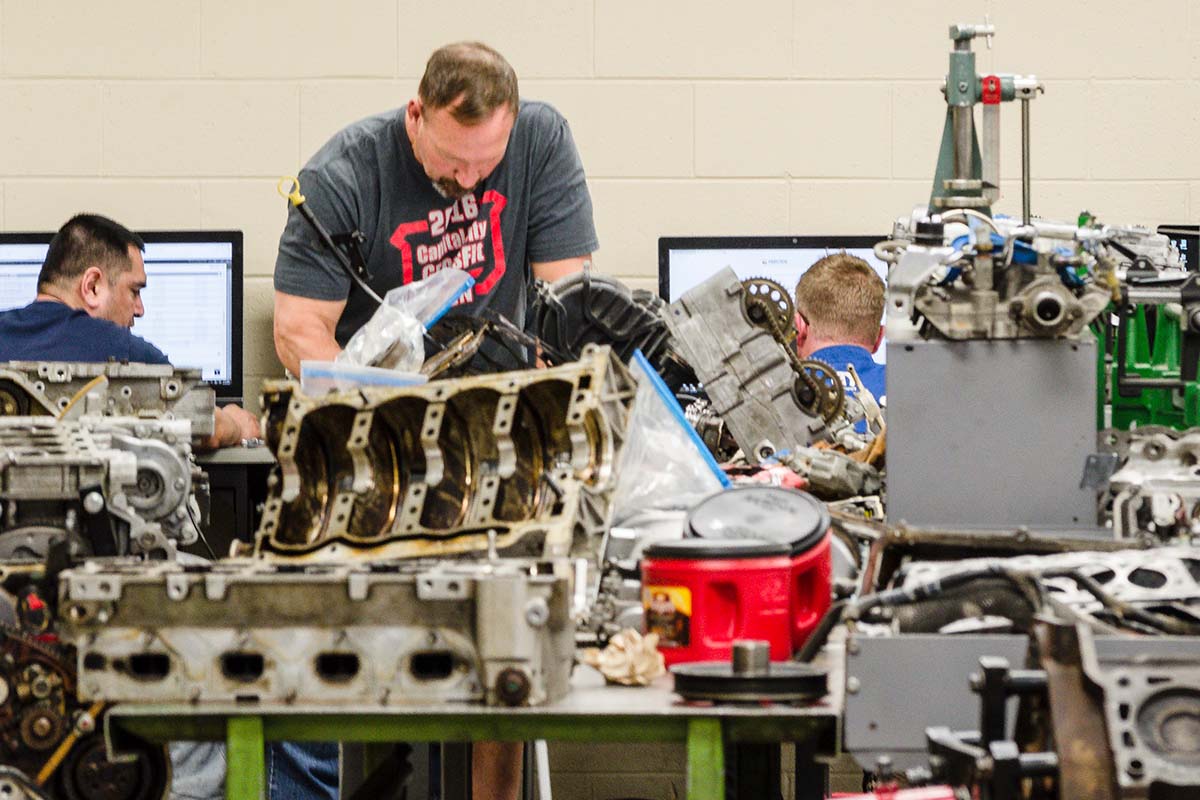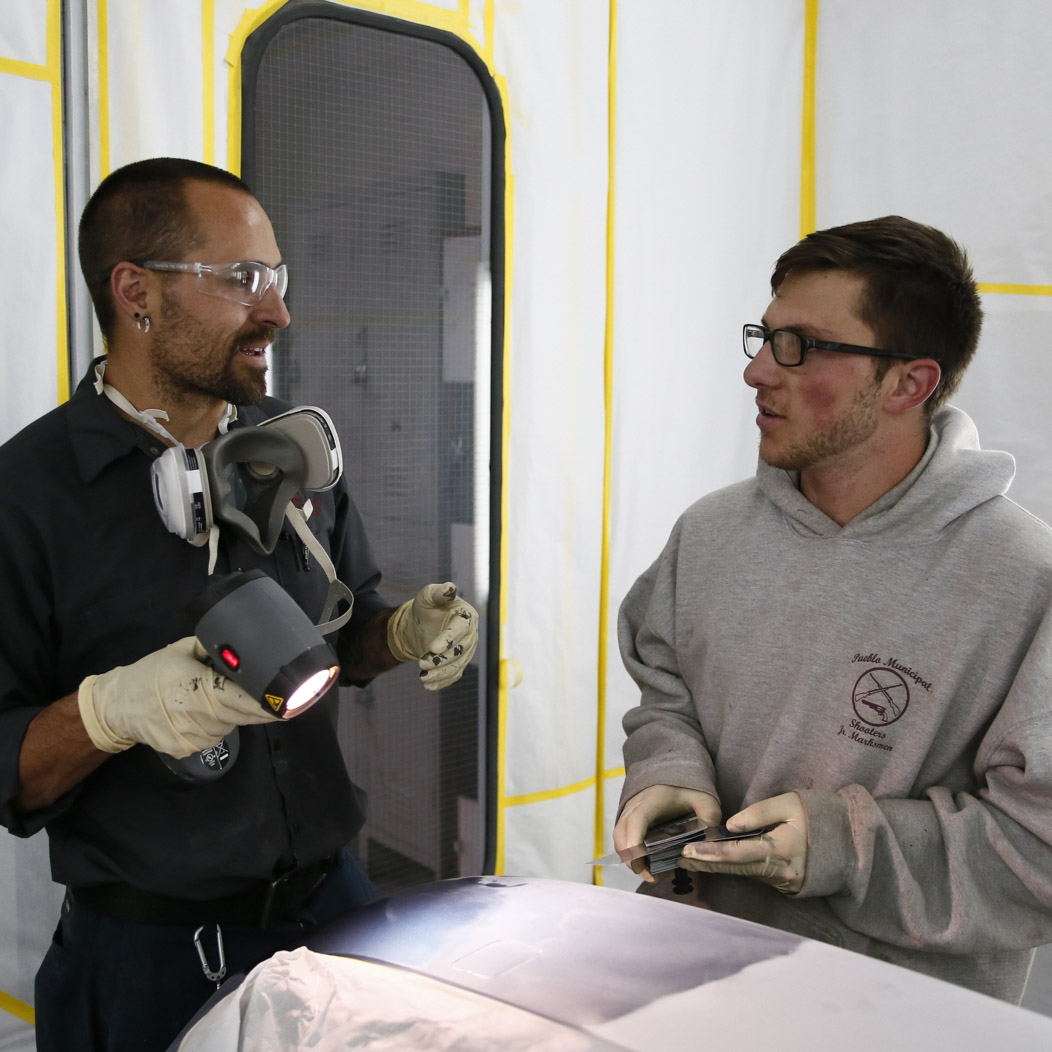Degree Type: Associate of Applied Science Degree, AAS, Certificate, CER
Pathway: Technical and Professional Studies
When studying Auto Collision at PPSC, you will learn from instructors who have real-world experience and who are leaders in the industry. Upon completion of the program, you'll be ready for a job in a body shop. In fact, some of our graduates have opened their own shops.
Current students—join us for a Registration Event to get help enrolling for the Summer and Fall semesters!
Meet with faculty and advising staff to: get one-on-one registration assistance, ask
questions about course offerings, sequencing, and program details, and receive general
academic advising.
In-Person:
March 18 | 12-2pm
Centennial Campus | Room B251
(Registration not required)
Don't miss this opportunity to plan your next semester with expert support. See you there!


Auto collision technicians are in demand. Many of the professionals in the field are nearing retirement, creating an abundance of jobs. A degree in auto collision can lead to the following careers:
The Automotive Collision Technology Associate of Applied Science prepares students to enter into, or upgrade skills in, auto collision repair. Students have the opportunity to develop skills in non-structural metal repair, structural repair, and all aspects of refinishing. Emphasis areas for this option include Collision, Customizing, Estimating, Mechanical, and Refinish.
The Customizing Technician Certificate is designed for students to learn a variety of techniques and skills associated with appearance-related and performance related modifications, including bodywork modification, addition of accessories, modification of frame, engine rebuilding and replacement, exhaust system modification, and modification of engine power.
The Estimating & Blueprinting Technician Certificate is designed for students to learn a variety of skills related to work in automotive shops.
The Non-Structural Repair Technician Certificate is designed for students to learn damage analysis as well as a variety of techniques and skills associated with the restoration of damaged exterior panels to original integrity, function, and appearance.
The Plastics Repair Technician Certificate is designed for students to learn damage analysis as well as a variety of techniques and skills associated with the repair of damaged rigid and flexible plastic components.
The Refinish Prep Technician Certificate is designed for students to learn a variety of techniques and skills associated with work on motor vehicle surfaces, specifically preparing for the restoration of vehicle finishes following body work.
The Refinish Technician Certificate is designed for students to learn a variety of techniques and skills associated with work on motor vehicle surfaces, specifically the preparation and application of paint to vehicles that have been repaired.
The R & I (removal and installation) Technician Certificate is designed for students to learn a variety of techniques and skills associated with the adjustment of and removal and installation of automotive parts, fixed glass, modular glass, panels, bumpers, etc.
When studying Auto Collision, you will learn from instructors who have real-world experience and who are leaders in the industry. Upon completion of the program, you'll be ready for a job in a body shop.
Explore Automotive Collision TechnologyIf you have a knack for mechanical work, can read and follow detailed instructions, and enjoy precision work and problem-solving, the Automotive Technology program might be for you. Prepare for a fun and challenging career in repair, service, sales, or supply.
Explore Automotive Technology